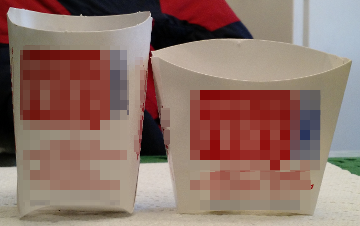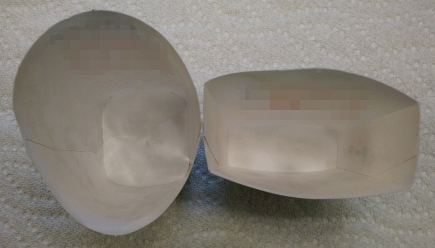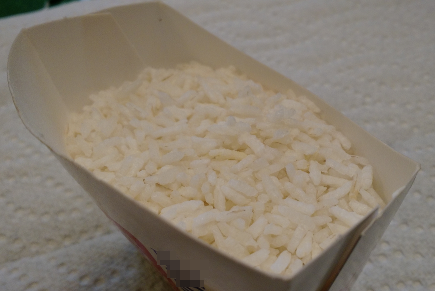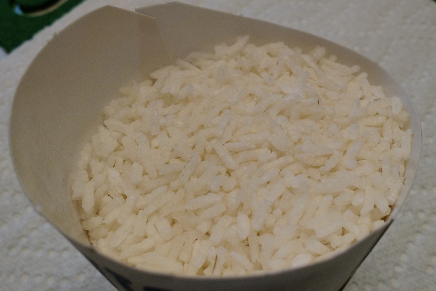Comparison between quantity and cost of fries
Is ordering the larger size worth the extra cost?
Took a short drive with the family to get lunch today. Among other items, we ordered small and medium-sized portions of fries. Everything tasted great, but I thought the amount of fries received between the two-sized boxes looked really similar. I began to think whether getting a medium was really worth the extra fourty-cents. So, I kept one of each and took some measurements to see whether ordering the larger size had any benefit. Ultimately, my interest is quantity per dollar. Keep in mind my method and results have some degree of error, but I will leave what percentage up to you.
Since the size of each fry is different and trying to measure each one would have been unpleasant, I went with something more manageable–rice. Due to the shape of each box, I could not fully-fill each one. The smaller box's bowed-front worked against my desire for empirical perfection, but in the end, I treated this extra volume as negligible.




| Size | Cost | Quantity of rice held |
|---|---|---|
| Small | $1.29 | 0.75 cups |
| Medium | $1.69 | 1.25 cups |
To find quantity per dollar, we just divide quantity by cost:
`"0.75 cups" / "$1.29" = "0.58 cups per dollar"`
`"1.25 cups" / "$1.69" = "0.74 cups per dollar"`
Looks like my hypothesis is correct. For some extra fun, we can now see how much it would cost to purchase the same medium quantity using the small-box rate:
`"1.25 cups" / "(0.58 cups / dollar)" = "$2.16 (difference of $0.47)"`
So, not only do we get more per dollar purchasing the medium size, but the extra fourty-cents is definitely worth it–if you are extra hungry.
Granted, my previous example proved a point, but you cannot order a fraction of a size. Ideally, the medium-quantity would have been twice the small-quantity, but we can still make a real, direct comparison by finding the LCM. In this case, it is 3.75.
`(3.75 / 0.75) * "$1.29" = "$6.45"`
`(3.75 / 1.25) * "$1.69" = "$5.07 (difference of $1.38)"`
By going the medium-route, if you felt inclined, you could purchase another small and still have nine-cents left over!
Since rice has less empty space between each grain than a fry, my results are inherently exaggerated. I maximized volume per cost and this just will not happen in everyday circumstances. The person putting the fries into the box is probably eyeing the result rather than using a machine or size-specific tool. Therefore, on any given day, you may get a different real-world result (albeit minor). And, as mentioned earlier, the shape of the boxes prevented completely filling them. If I were to do this experiment again, I would try grading the rice from the back to the front of the box. The data collected from the small box had the most error based on how the current data was collected. Lastly, I encourage anyone to try a similar experiment any time you are given a choice between different sizing and pricing of a given item.